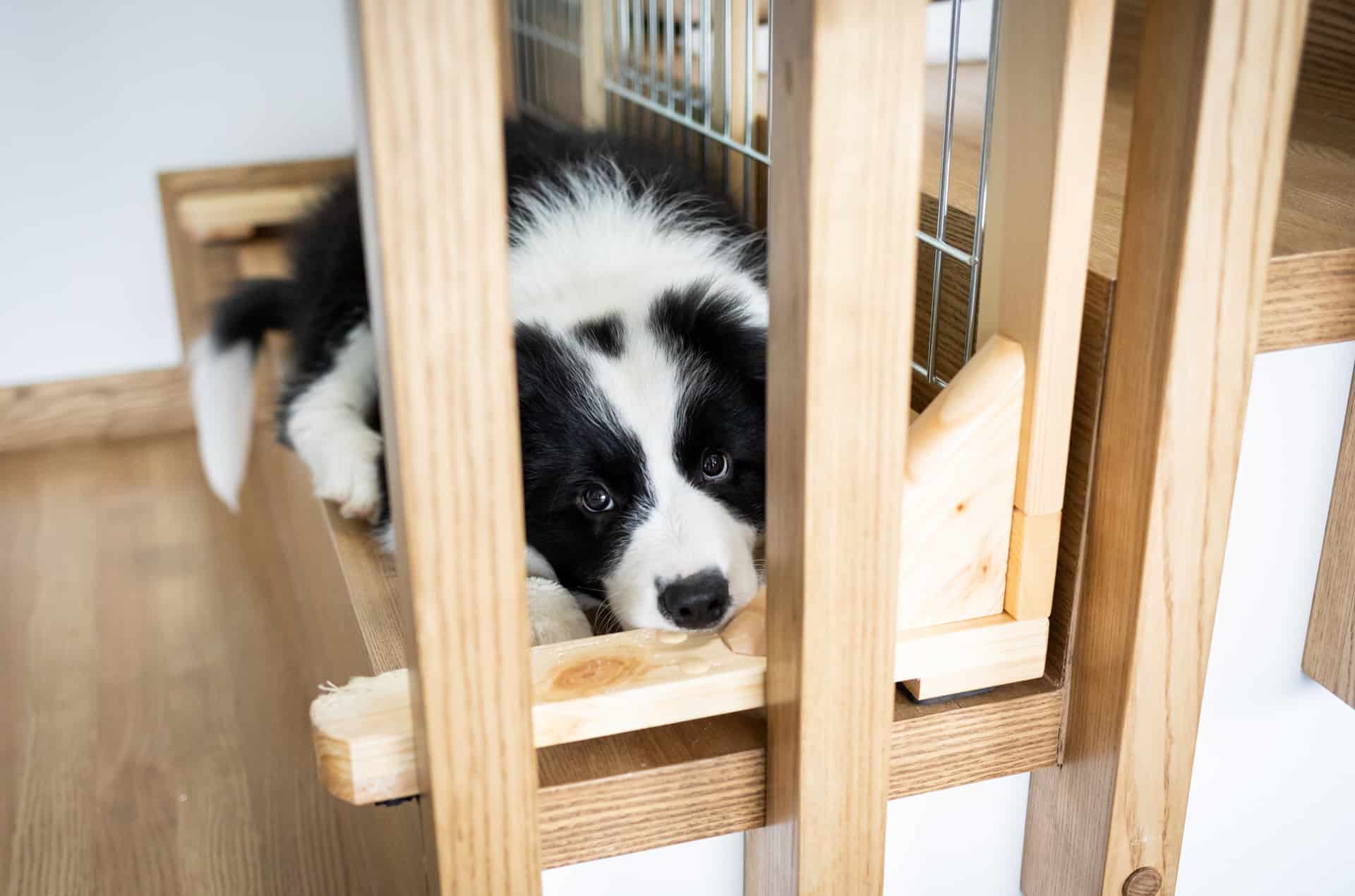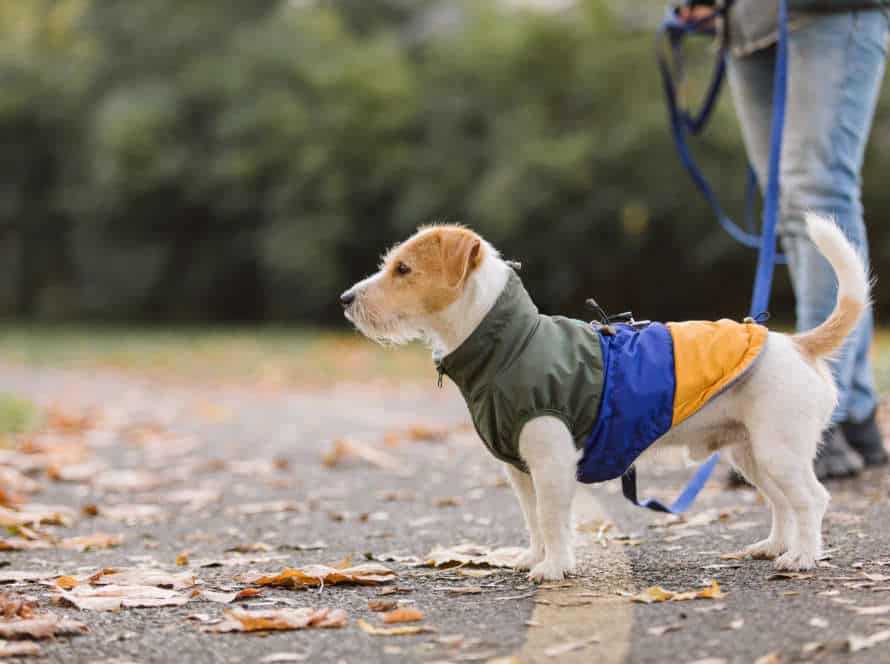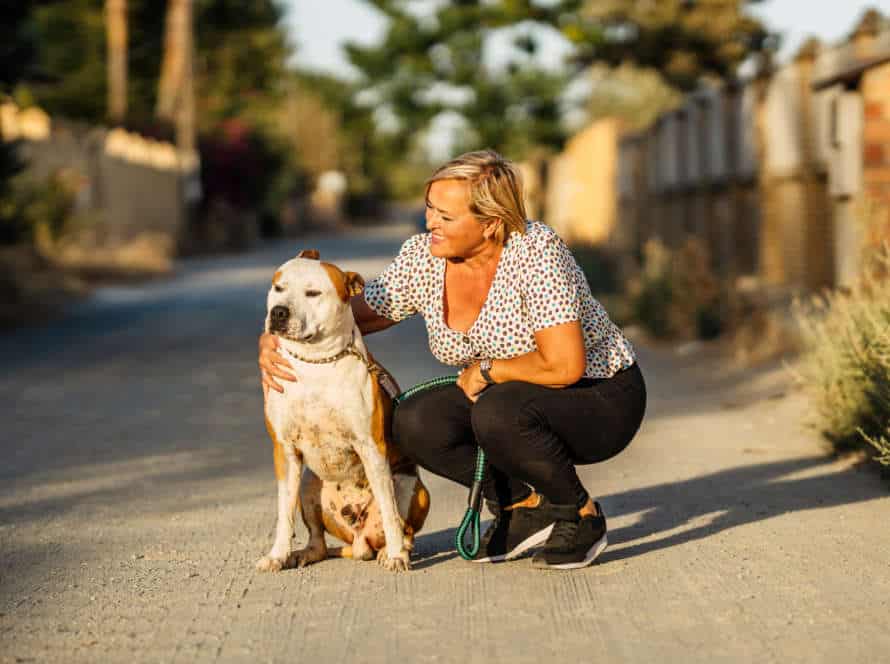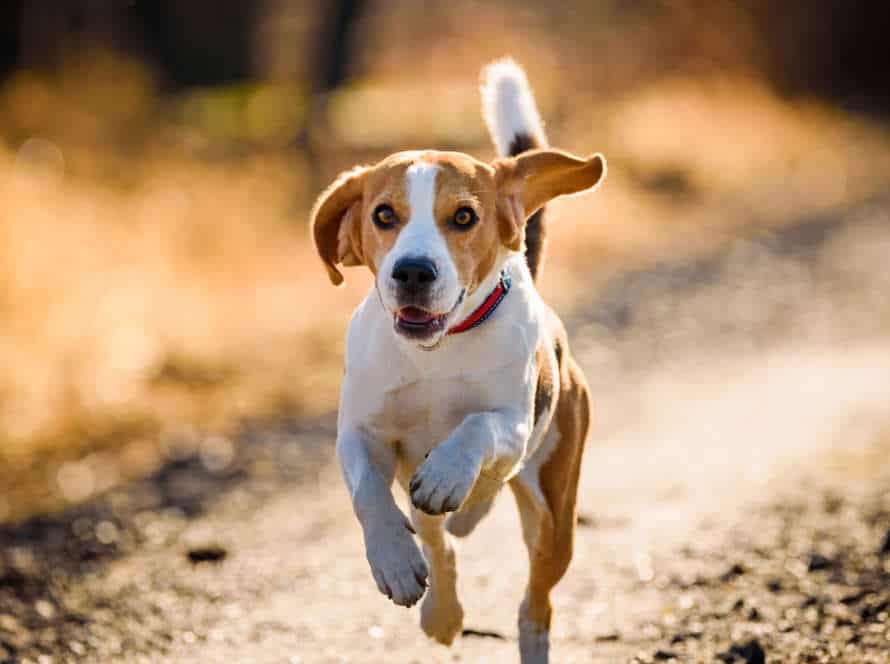Using Barriers and Deterrents to Keep Dogs Off Furniture
Barriers and deterrents are a great way to stop your dogs from getting onto furniture and damaging it. Here are some ideas:
- Physical barriers – Set up baby gates or dog gates to block off the furniture or certain rooms. Or, put covers or mats over the furniture to keep your pup away.
- Training – Train your dog basic commands and reward them for good behavior. Give them comfy bedding and toys in their own spot to encourage them to stay away from the furniture.
- Deterrents – Use scents like citrus or vinegar that dogs don’t like. Or, have a can of coins or a dog whistle to discourage unwanted behavior.
By using these tips, you can keep your furniture safe and your pup comfy in their own space.
Types of Barriers
Barriers and deterrents are an excellent way to keep dogs from your furniture. Physical barriers such as pet gates and furniture protectors are a great solution. Additionally, deterrents like pheromone sprays, bitter sprays, and sound devices, can all help to discourage dogs from wanting to access the furniture. Let’s look into the different kinds of barriers and deterrents that can be used!
Physical Barriers
Barriers and deterrents are great for keeping pups off furniture. Here are 4 types:
- Baby gates – these are an easy and cheap way to keep pooches away from furniture.
- Couch defenders – vinyl barriers that attach to the arms of your couch, blocking the cushions.
- Motion-activated deterrents – electronic devices with sounds, sprays, or vibrations when a dog gets close.
- Lint rollers – clean up pet hair and create a smell that dogs don’t like.
Combine them for best results!
Baby gates
Baby gates are a great way to keep dogs away from furniture. But, there are two types. Pressure-mounted and hardware-mounted. Pressure mounted are easier to install and remove, but not as sturdy. Whereas hardware-mounted can be screwed into place for added security.
When choosing a baby gate, make sure it is tall and strong enough for your pup. Also, consider the gate’s material and design. Some dogs can climb or chew through certain types.
In addition to baby gates, other barriers or deterrents you can use include motion-activated alarms, citrus sprays, and electronic repellents. These are great for keeping your dog away from furniture. Plus, they will help with training.
Pro tip: Reward your pup with treats or praise when they stay on their own bed.
Exercise pens
Exercise pens are a great way to limit your pup’s access to furniture. There are multiple options to help train them:
- Exercise pens: These create an area for your dog to be in. It also gives them room to move around and stay away from the furniture.
- Repellent sprays: These have an unappealing taste and smell, discouraging dogs from chewing or climbing on furniture.
- Noise deterrents: Devices that make a high-frequency sound or a loud noise can be used to train your pup to stay off furniture.
- Anti-climb sprays: These stop dogs from getting on furniture or jumping over fences. They make a texture or smell that is uncomfortable.
Using barriers and deterrents regularly helps train your pup to stay off furniture. This protects your furniture and keeps your pup safe.
Couch covers or plastic mats
Couch covers and plastic mats are barriers used to stop dogs from getting on furniture. They are made to give a physical stop without causing any harm.
Couch covers: Special covers that fit over a couch to stop scratches, spills, and pet hair. They also teach dogs to stay off the couch by making it uncomfortable to sit or lie on.
Plastic mats: Thin plastic mats put on furniture to stop dogs from jumping up. The mats have bumps or spikes which make them uncomfortable for dogs. Some mats make a loud noise or shock when a dog touches them. This startles the dog and makes them get off.
Both of these barriers keep dogs off furniture. But it’s important to pair them with positive reinforcement training and give lots of comfortable spots for your dog to rest.
Visual Barriers
Visual barriers are a great way to keep dogs off furniture. Here are some options to consider:
- Blankets: Choose a thick and heavy one to stop the dog from climbing.
- Plastic carpet runners: They have spikes that keep dogs away. Some are clear, ideal for patterned furniture.
- Aluminum foil: Crumpled up foil is unpleasant for dogs to walk on.
- Double-sided tape: Its adhesive will deter them from jumping.
Remember to use visual barriers with training and positive reinforcement. Show your dog the right places to sit. Reward good behaviour.
Visual cues
Visual cues can act as a barrier to keep dogs off furniture. Some ideas:
- Sticky tape or contact paper: Put double-sided tape or contact paper on furniture with the sticky side up. Dogs don’t like the feeling of stickiness.
- Aluminum foil: Cover furniture with aluminum foil. Dogs don’t like the sensation.
- Spray bottle: Fill a spray bottle with water. Spritz the dog if they try to climb furniture. This will create a negative connection with the furniture and they’ll eventually stay away.
Also, give your dog their own spot to relax and rest comfortably. This will help them learn good behaviors and reduce destructive behavior.
Motion-activated deterrents
Motion-activated deterrents are a great way to keep dogs off furniture. There are two types: sound and spray. Sound deterrents beep or hiss when the pup jumps on the furniture. Spray deterrents release a mist of air or citronella. Using motion-activated deterrents alone isn’t enough. Baby gates or furniture covers should be used too. Remember: be patient with your pup. Consistency and positive reinforcement are key!
Citrus scents
Citrus scents can act as a natural barrier to keep dogs away from furniture. Dogs don’t like the smell, so they’re less likely to approach areas with it. Here are some citrus scents to use as deterrents:
- Lemon: Rub a fresh lemon peel on furniture, or use lemon-scented cleaning products.
- Orange: Orange-scented sprays and essential oils can help too.
- Grapefruit: Rub a slice of grapefruit on furniture, or use grapefruit-scented candles.
Note – Citrus scents may not work on all dogs. Make sure to give them their own comfortable, designated spaces. Pro tip – Test a small area for discoloration before applying to furniture.
Deterrents
Deterrents are great for keeping Fido off your furniture! Unpleasant experiences and negative reinforcement are key. For example, make a loud noise or use a spray bottle – this’ll help your doggo learn not to jump on furniture. These methods, used right, can be a successful way of preventing your pup from jumping up on the furniture.
Odor Deterrents
Odor deterrents can be an efficient way to keep canines off your furniture. Here are some natural ones to try:
- Citrus Fruits: Dogs don’t appreciate the smell of lemons and oranges. Use citrus essential oils or put together homemade citrus sprays to make your furniture off-limits.
- Vinegar: White vinegar smells bad to them. Dilute it with water, then spray on your furniture. Apple cider vinegar can work too.
- Essential Oils: Certain smells like lavender and eucalyptus make them uncomfortable. Dilute with water, then spray on the furniture.
Pro tip: Train your dog to stay away from your furniture. Set up somewhere comfortable for them and use positive reinforcement and consistent training.
Citrus scents
Citrus scents are a natural deterrent for dogs. Humans like the smell, but dogs don’t! To use citrus as a dog deterrent, try these tips:
- Cut up lemon or orange peels and place them on furniture or other areas you want to keep a dog away from.
- Dab citrus essential oil onto a cotton ball and put it in the same spots.
- Mix water and citrus juice, then spray it on furniture.
- Reapply peels or essential oils every few days.
- Supervise your dog around citrus-scented areas to make sure they don’t ingest it, which is harmful.
Bitter sprays
Bitter sprays are an ideal way to keep canines away from furniture. They have a nasty taste that dogs don’t appreciate, and are safe for most furniture. Here’s what to do when using them:
- Pick a top-notch bitter spray meant for dogs.
- Test it on a hidden spot of furniture first so it won’t ruin the fabric or finish.
- Spray evenly on the furniture and make sure all areas are covered.
- After cleaning, spray again as needed.
- Be aware – these sprays may not work for all dogs. Consistency is key. Offer appropriate chew toys and a space for them to play and relax.
Vinegar
Vinegar has a strong smell which makes it a great tool to keep dogs away from furniture. The scent of vinegar isn’t pleasant to dogs and masks the smells of furniture that they usually like. Here’s how to use it:
- Mix equal parts of water and vinegar in a spray bottle.
- Shake it well and lightly spray on the furniture.
- Repeat this process every few days to keep the scent and stop your pup from getting on the furniture.
Beware of items that may be harmed by the vinegar, like leather or wood furniture, and only use the solution sparingly or not at all in those cases.
Noise Deterrents
Having trouble keeping your pup away from furniture? Don’t resort to physical punishment. There are noise deterrents that can help!
- Shaker cans make loud noises that startle dogs off furniture.
- Ultrasonic devices produce high-pitched sounds that dogs don’t like.
- White noise machines mask sounds that may attract your pup.
- Motion sensor alarms detect pup presence and emit loud noises.
Reward pup with positive reinforcement when they stay off furniture. Use a mix of different deterrents to discourage them from jumping up!
Alarms
Alarms can be useful in keeping dogs off furniture. There are several types to try:
- Motion-activated alarms – place near the furniture you want to protect. When your dog jumps, the alarm sounds and scares them away.
- Proximity alarms – similar to motion-activated alarms; these go off when your dog gets too close to the furniture.
- Sound-emitting mats – place a mat on the furniture and it emits a loud sound when your dog jumps.
Always supervise your dog during training. Reward them with treats/praise when they stay off the furniture. With persistence, your dog can learn to stay away.
Noise makers
Noise makers can be useful for keeping dogs off furniture. Dogs are sensitive to loud, sudden noises. Here are noise makers you can use:
- Shaker cans: Fill an empty can with coins or pebbles. When you see your dog trying to climb on furniture, shake the can to make a loud noise to deter them.
- Whistles: A loud, high-pitched whistle can startle the dog and discourage them from getting on the furniture.
- Alarms: Motion-activated alarms near the furniture will startle your dog if they try to get on it.
Remember: Use noise makers to train your dog, not as a punishment. Consistency is key.
Pro tip: Reward your dog with treats when they don’t climb on the furniture to encourage good behavior.
White noise machines
White noise machines can be used to keep dogs away from furniture. The ambient sound distracts and discourages them from jumping or barking. Keep these things in mind when choosing one:
- Pick a machine that makes a soothing sound.
- Place it close to the furniture you want protected.
- Keep the noise consistent, even when the dog is not there.
Remember: White noise is great, but it’s also important to train your dog positively and give them cozy spots to chill.
Static Deterrents
Static deterrents can be an effective way to keep dogs off furniture. They create an unpleasant or uncomfortable sensation which can help train your pup to stay away from certain areas. Here are some you could use:
- Sticky Paws Furniture Strips – Clear adhesive strips with a texture that cats & dogs don’t like walking on. Can be used on furniture, curtains and carpets.
- Scat Mats – Emit a mild static shock when touched with paws. Can be placed on furniture, carpets and doorways.
- Aluminum foil & double-sided tape – Inexpensive and simple way to create an unpleasant surface.
Combine these deterrents with positive reinforcement training to teach your dog to stay away from furniture & establish boundaries. Pro tip: be consistent & reward your pup when they stay away from furniture to reinforce their good behavior.
Shock collars
Shock collars are not the way to go for keeping dogs off furniture. Not only are they cruel, but won’t address the actual behavior causing the problem.
Instead, use positive reinforcement techniques and physical barriers. Positive reinforcement means rewarding your dog for the desired behavior like staying on their bed or following the “off” command. Use treats, praise and toys to reinforce.
Physical barriers can include baby gates, exercise pens and furniture covers. These will physically keep your dog away and help establish rules.
Always be patient and consistent with training and never resort to cruel methods like shock collars.
Static mats
Static mats are a great way to stop your pup from jumping on the furniture. They give off a mild shock when the dog steps on them, making it an unpleasant experience.
Here are some tips for using static mats:
- Put the mat in the spot your pup usually jumps.
- Turn on the mat and adjust the static shock to fit the size and sensitivity of your dog.
- Keep the mat on when you’re not home or when you’re sleeping.
- Be consistent and eventually your pup will learn to stay away from the furniture.
- You can combine other deterrents with the mat, like verbal commands and positive reinforcement, to help your pup learn the behavior you want.
Static balls
Static balls can deter dogs from furniture. These are battery-powered and emit a mild, harmless static shock when the dog gets close.
Place them on furniture you don’t want your pet near. Adjust the radius to the distance you want.
Train your dog to connect the shock with the furniture. This should discourage them from coming close.
Note: Static balls shouldn’t replace proper training, or be used as punishment. They are just a supplement to discourage bad behavior.
Frequently Asked Questions
1. What are some effective barriers to keep dogs off furniture?
There are a few different types of barriers that can be effective, such as baby gates, outdoor fencing, or furniture covers that are specifically designed to keep pets off.
2. Can deterrent sprays be used to keep dogs off furniture?
Yes, there are sprays that are safe for pets that can be used on furniture to deter dogs. These sprays release a scent that is unpleasant to dogs, but does not harm them.
3. Is it possible to train dogs to stay off furniture?
Yes, it is possible to train dogs to stay off furniture using positive reinforcement techniques. Consistency and patience are key when training dogs.
4. How can I keep my dog from jumping on the couch when I’m not there to supervise?
You can use a combination of barriers and deterrents to keep your dog off furniture when you’re not home. Baby gates can be used to block off rooms where the furniture is located, and furniture covers or deterrent sprays can be used on the furniture itself.
5. What if my dog still insists on jumping on furniture?
If your dog is still jumping on furniture despite your efforts to deter them, it may be helpful to consult with a professional dog trainer or behaviorist. They can provide additional guidance and advice.
6. Are there any risks to using deterrent sprays on furniture?
As long as deterrent sprays are used as directed, there should be no risks to using them on furniture. However, it’s important to make sure you choose a spray that is safe for pets and does not contain any harmful chemicals.







